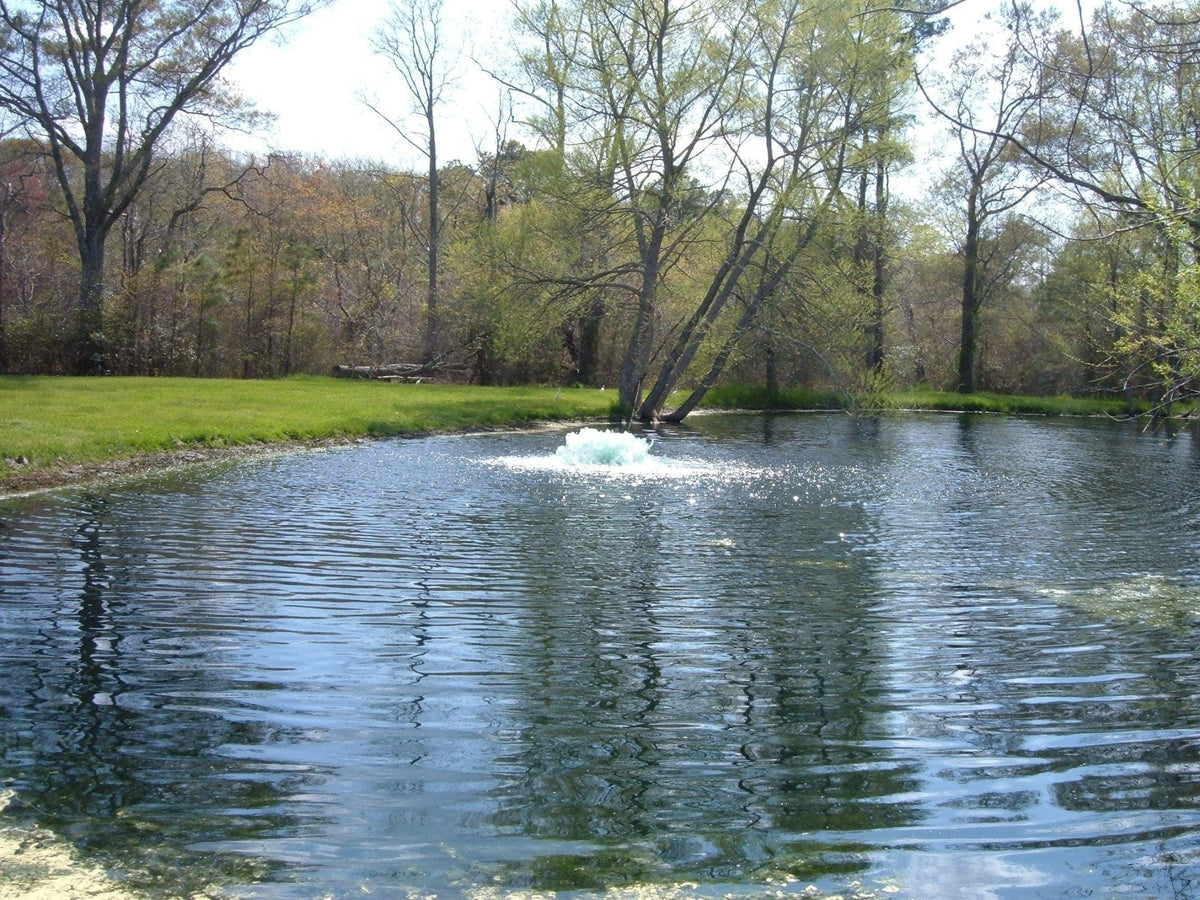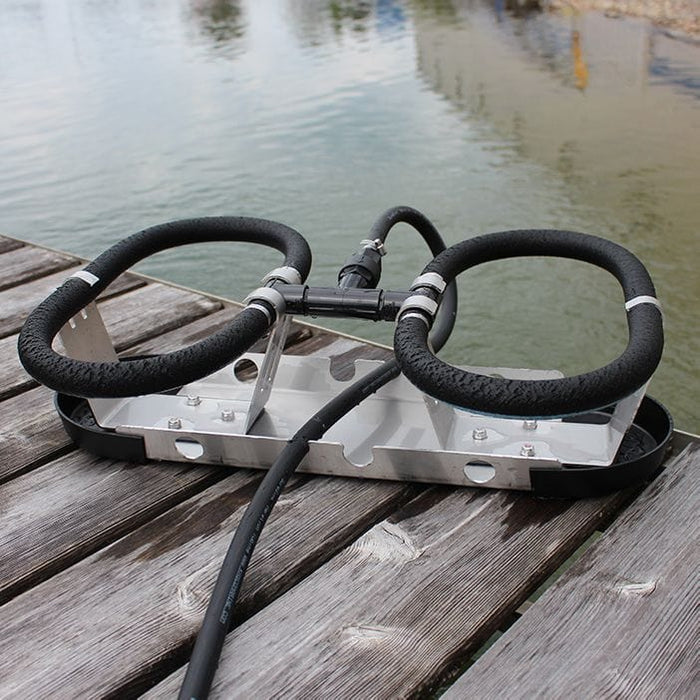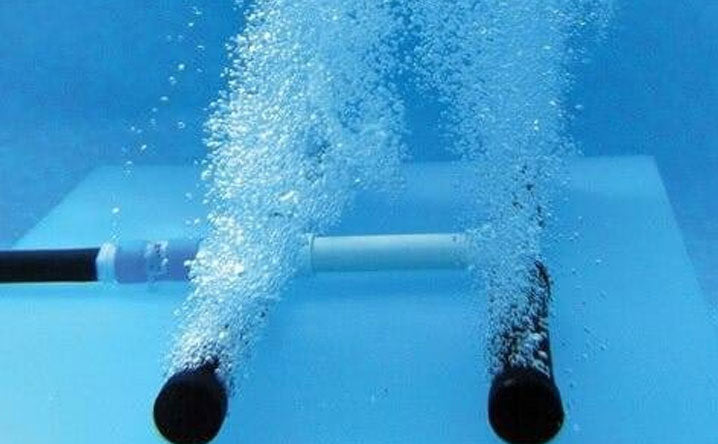Introduction
In the quest for healthier aquatic ecosystems, you cannot overstate the significance of pond aeration. Aeration means increasing oxygen levels in water bodies. It serves as the lifeblood for ponds and lakes, fostering vibrant, clean, and balanced habitats. By addressing the root causes of common issues like excessive algae growth and foul odors, aeration systems—ranging from windmill-driven solutions to surface aerators—offer a natural and effective means to rejuvenate stagnant waters. Join us as we explore the importance of pond aeration and simple techniques like "How to aerate a pond naturally," which can impact the health and beauty of your pond or lake.
Understanding Aeration

Aeration is a transformative process, pivotal for maintaining a pond's vitality. At its core, aeration involves introducing oxygen into the water, a simple act with profound implications for ecosystem health. You can achieve this through various means, including pond aerators and windmills for pond aeration, which circulate oxygen throughout the water, from the surface down to the bottom sediments. This circulation prevents stratification, ensuring even distribution of oxygen across all depths. The presence of adequate oxygen is crucial for decomposing organic matter effectively, thereby avoiding the buildup of harmful gases and substances that can degrade water quality.
Furthermore, aeration supports beneficial bacteria growth, contributing to a balanced and healthy aquatic environment. Understanding the mechanics behind aeration lays the groundwork for appreciating its indispensable role in waterbody management.
The Necessity of Aeration in Aquatic Environments
The health of aquatic ecosystems, whether in a lake or a pond, hinges significantly on aeration. Aeration is a necessity for sustaining life beneath the water's surface. The process ensures that dissolved oxygen levels support aquatic life, from fish to microscopic organisms, which is essential for a balanced ecosystem.
In stagnant waters, where natural aeration is minimal, the introduction of pond aerators or windmill pond aeration systems becomes crucial. These systems mimic biological processes, ensuring water movement and oxygen infusion, which are vital for the survival of fish and the prevention of algae overgrowth.
Aeration plays a critical role in maintaining water quality. By facilitating the breakdown of excess nutrients and reducing the buildup of harmful gases, aeration systems like a pond surface aerator help prevent the water from becoming anoxic—an environment so oxygen-depleted that aquatic life cannot survive.
This process also helps reduce mosquito activity, as these pests thrive in stagnant, oxygen-poor waters. Therefore, one cannot overstate the necessity of aeration in maintaining the ecological balance and overall health of ponds and lakes, making it a foundational aspect of water management strategies.
Comprehensive Benefits of Aeration
Enhancing Water Quality

Aeration significantly improves the water quality in lakes and ponds by circulating the water and increasing dissolved oxygen levels. This process helps break down unwanted nutrients and reduces harmful substances, leading to clearer and healthier water bodies. Using pond surface aerators and pond supplies can transform murky waters into pristine environments, fostering a vibrant aquatic ecosystem.
Algae and Odor Management
One of the most visible benefits of aeration is its effectiveness in controlling algae growth and eliminating foul odors. By increasing oxygen levels and circulating water, aeration disrupts the conditions algae blooms need to thrive, thus keeping algae populations in check; this also helps break down organic matter more efficiently, reducing the production of gases that cause unpleasant smells.
Oxygenation and Fish Health
Aeration is vital for maintaining high dissolved oxygen levels, which are crucial for fish health and survival. Oxygen-rich environments support larger populations of fish and improve their growth rates. Windmill pond aeration systems can be particularly effective, providing continuous oxygenation without electricity, thereby enhancing the fish habitat naturally and sustainably.
Sediment Reduction and Mosquito Control
By promoting the breakdown of organic matter, aeration also helps reduce the accumulation of bottom sediment in ponds and lakes, improving water quality and minimizing mosquitoes' habitats, thereby reducing mosquito activity. Adequate aeration, therefore, plays a dual role in enhancing the aesthetic and recreational value of water bodies while also contributing to public health by controlling mosquito populations.
Additional Ecological Advantages
Beyond these direct benefits, aeration offers several ecological advantages, such as promoting biodiversity and stabilizing the pond or lake environment. The increased oxygen levels and improved water quality support a more comprehensive range of aquatic life, from microorganisms to larger fish species, contributing to a balanced and thriving ecosystem.
By incorporating these aeration benefits into the ecosystem of a pond or lake, owners and managers can ensure a healthier, more vibrant, and ecologically balanced body of water, underscoring the importance of pond aeration benefits.
Implementing Aeration Systems: Considerations and Best Practices

When introducing an aeration system into a pond or lake, evaluating several factors is crucial to ensure optimal performance and ecological benefit. Implementing pond aerators or windmill pond aeration systems requires a thoughtful approach, blending technical considerations with environmental mindfulness.
- Assess the specific needs of your aquatic environment. Factors such as water volume, depth, and existing marine life will dictate the type of aeration system most suitable for your pond or lake. Pond surface aerators are well-suited for shallow waters, whereas diffused aerators might be more effective in deeper areas.
- Selecting the right equipment is paramount. Opt for pond supplies and systems that offer both efficiency and durability. Choose supplies that can be adapted for various settings, ensuring that your aeration system fits perfectly within the unique contours of your body of water.
- You should perform installations precisely, strategically placing aeration devices to maximize water circulation and oxygen distribution. Regular maintenance, including routine inspections and cleaning, will prolong the lifespan of your equipment and sustain high water quality levels.
- Consider the energy requirements of your chosen aeration system - Innovative solutions like windmill pond aeration harness natural forces to aerate water, offering an eco-friendly alternative to electrically powered systems.
By adhering to these considerations and best practices, you can effectively implement an aeration system that enhances water quality, supports aquatic life, and ensures the longevity of your pond or lake.
Conclusion: The Transformative Effect of Aeration on Ponds and Lakes
Lake and pond aeration is crucial for maintaining healthy aquatic ecosystems. By using aerators, we improve water quality, encourage a vibrant habitat for wildlife, and reduce algae and sediment. Benefits include clearer water, higher oxygen levels, and less carbon dioxide, which collectively enhance the environment for fish and deter mosquitoes, making the area more enjoyable. Sustainable aeration options, like windmill systems, offer efficient solutions. Embracing aeration is essential for vibrant, healthy ponds and lakes, underscoring a commitment to ecological well-being and transforming water bodies into thriving ecosystems.

